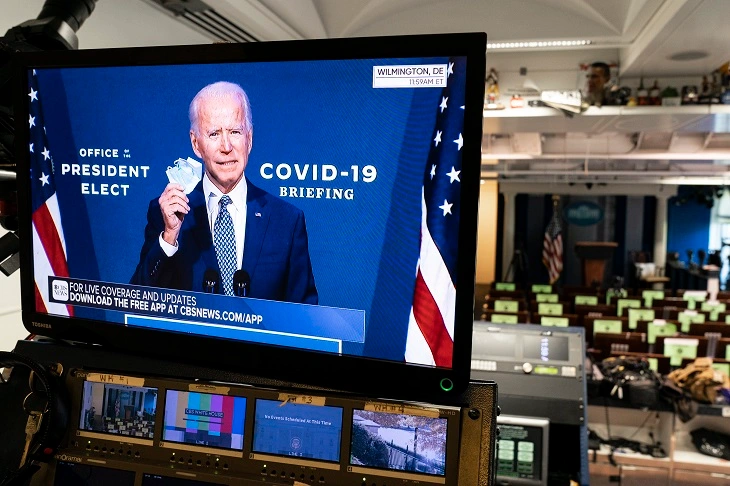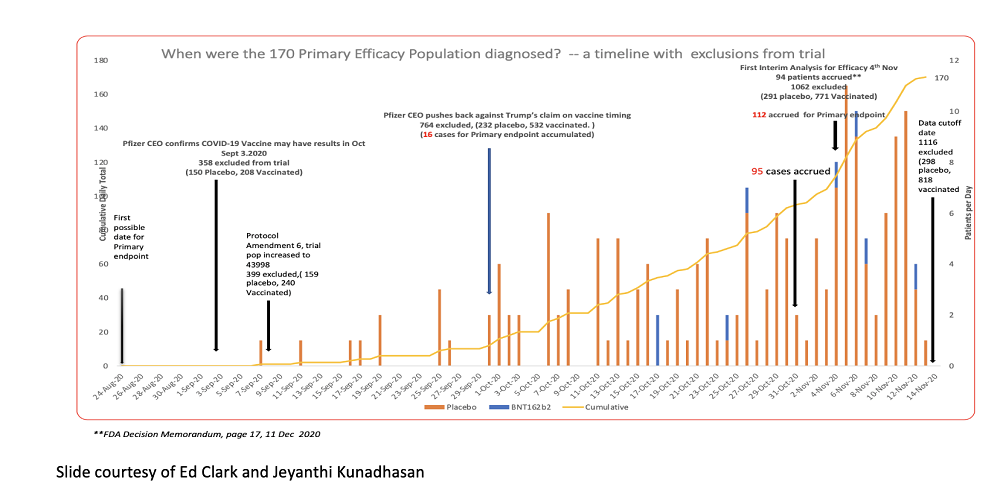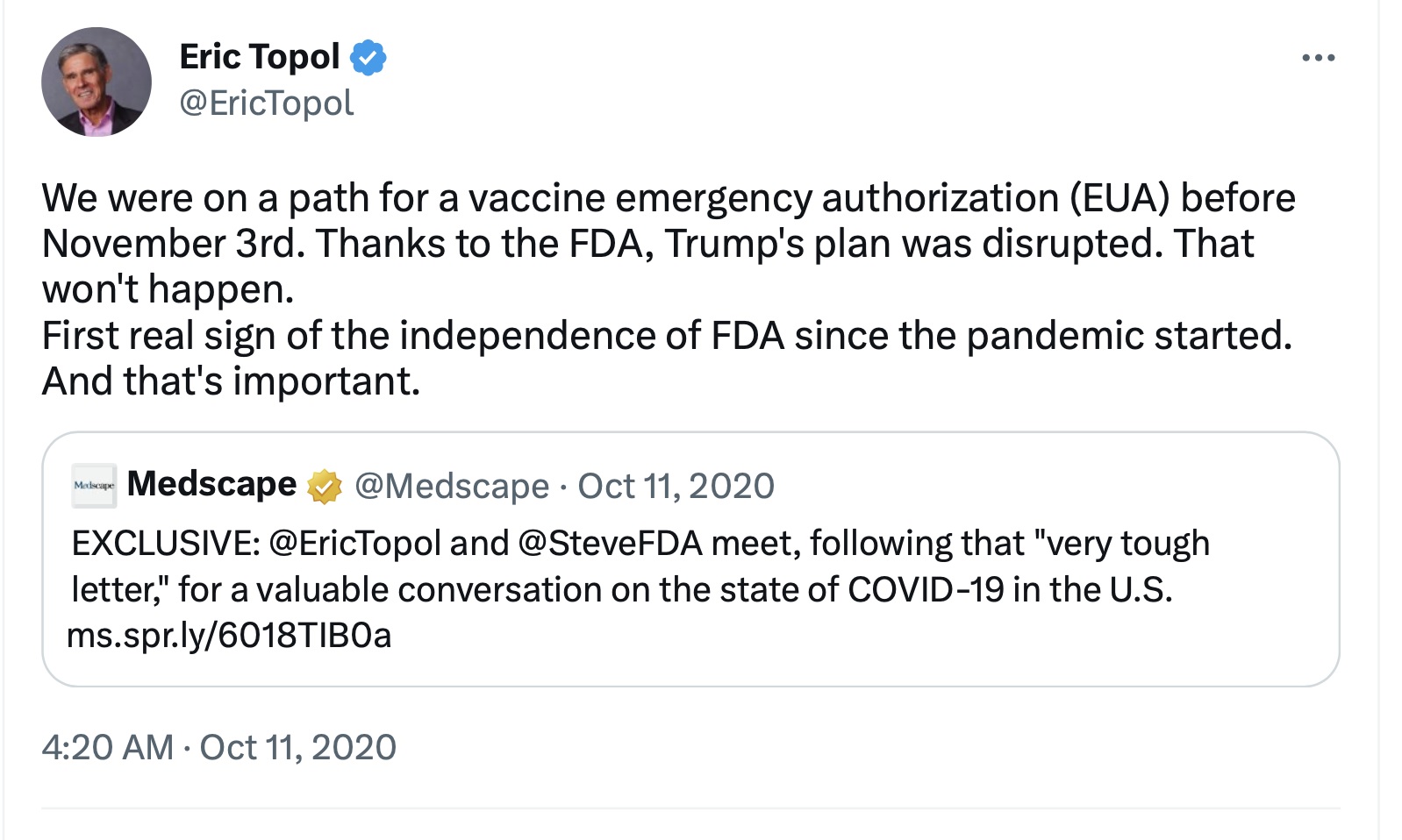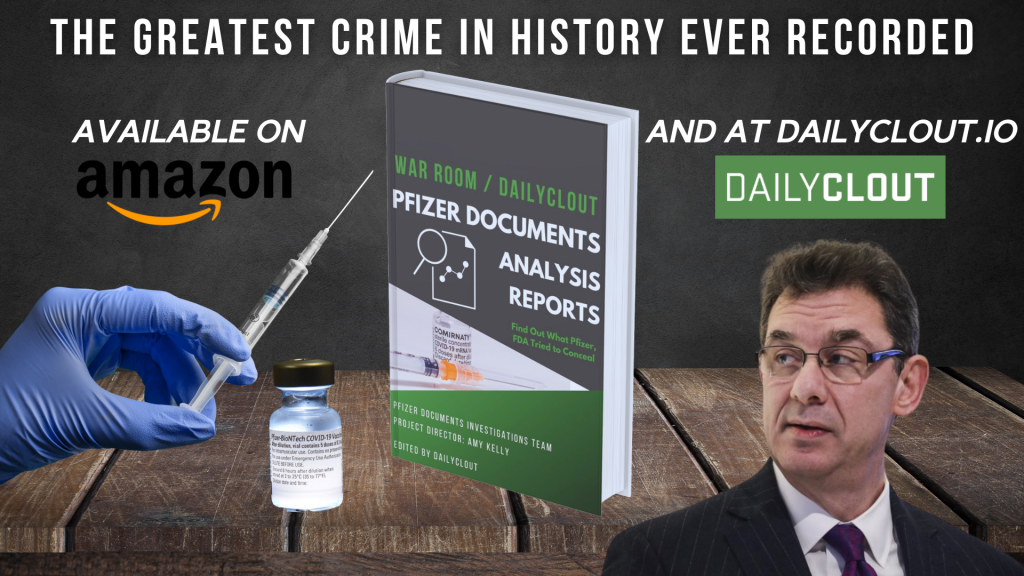The Powerful Politics of COVID Vaccines

Originally published at spectator.com.au

Image Credit: Getty Images
When did Pfizer accumulate the 94 cases which would have qualified for the primary endpoint (the evaluable efficacy population) for the pivotal Pfizer-BioNTech Vaccine that resulted in the Emergency Use Authorisation (EUA) being granted?
In the EUA decision memorandum on page 17, it stated: ‘The date for data cut-off for the first interim analysis for efficacy was November 4, 2020, when a total of 94 confirmed COVID-19 cases were accrued.’
According to a press release from Pfizer on November 9, 2020, the first interim efficacy analysis was only conducted on November 8, 2020 by an external, independent Data Monitoring Committee (DMC).
To put this in context, Joe Biden was declared the winner of the 2020 Presidential race on November 7, 2020. We also have to remember that the EUA documentation was only published on Dec 11, 2020.
Publicly, all that we knew of the vaccine at the time was the contents of Pfizer’s announcement on November 9 that there were ‘promising results’ from its first interim analysis.
However, according to analysis done by plotting the accrual of the pivotal 170 primary endpoint population by date of diagnosis, it can be estimated that 95 cases of Covid were diagnosed by 31, October 2020. This analysis was done by charting the accrual of the 170 population by date of diagnosis. This is an estimate only because in a small number of patients, the date of diagnosis was not charted explicitly in the documentation provided, and the date the swab was taken was used instead.

The question becomes, what caused the delay in the announcement? Did anyone wonder why a trial that had started on July 27, and with first possible date for the primary endpoint population being from August 24, 2020, that the first interim analysis of cases was only done on November 8, and the final threshold for eligible cases was able to be reached on November 14, a mere 6 days later?
(To qualify in the primary endpoint of this trial, one had to receive two doses of the drug, 21 days apart, have no evidence of prior SARS-CoV-2 infection from 7 days after dose 2 and have no major protocol deviation. The dosing interval however appeared to have been changed after the trial started to 19-42 days, though a formal protocol amendment to this effect was never filed.)
In a press release, Pfizer explicitly said it did not conduct the first interim analysis planned at 32 cases after discussion with the FDA, but would conduct the first interim analysis upon accrual of more than 62 cases. We show that this threshold of 62 cases would have been reached well into the last week of October 2020.
Why was no interim analysis performed well after 62 cases were accumulated?
Is it reasonable to ask if the approval of the Covid vaccine became politicised?
The New York Times floated the idea of an ‘October surprise’, raising concerns about the promise of a Covid vaccine becoming an election stunt in the middle of the US Presidential campaign. As Technology Review wrote:
‘…a heart expert and researcher with a huge Twitter following of his own, was already weeks into a personal campaign to make sure the administration could not rush a Covid-19 vaccine through regulatory authorisation before Election Day on November 3 … developing an effective vaccine against Covid-19 is “the biggest event in our generation” and one that should be evaluated on the basis of scientific data, not political implications.’
The idea was to delay the approval of the vaccine until after the November election and ensure that any approval was based upon science, not political convenience.

Individuals from the Office of Vaccines Research and Review, Center for Biologics Evaluation and Research of the Food and Drug Administration penned an article in the New England Journal of Medicine on October 16, 2020, outlining a new requirement that data from phase 3 studies to support an EUA (which may result from a protocol-specified interim analysis) include a median follow-up duration of at least 2 months of safety data after completion of the full vaccination regimen.
The milestone of 2 months of safety data for half of the clinical trial participants would be reached in the third week of November 2020. As this was now a requirement, in the EUA documentation, it had to be admitted that during the first interim analysis data cut-off, that this new requirement of 2 month safety data had not been reached.
As outlined in the previous article, the timing of the interim analysis was always key. This was outlined in the protocol, planned at the accrual of 32, 62, 92, 120 eligible cases with a final analysis at 164 cases.
When Pfizer’s CEO said on Sept 3, 2020, that there would be late-stage trial results October of that year, there were no eligible cases accrued, as far as we can tell. He pushed back on October 1 against politicisation of the vaccine development seen during the Presidential debate on September 29, pledging to submit a vaccine for approval only after it has gone through the appropriate trials.
Hence, when the data cutoff was announced for Nov 4, they had not fulfilled the new criteria the FDA had laid out. If allowed to circumvent this requirement, why not when more 62 cases had been accrued? This drug had been touted as the breakthrough tool to help end the global health crisis. If so, was there not a responsibility then to bring this out as soon as possible?
On July 24, President Trump had signed four executive orders aimed at lowering drug prices. Tellingly, the article cited claims they would have ‘minimal effect, if they are implemented at all’. I do find President Trump’s continued support of the Covid vaccine perplexing in light of the troubling safety data we have seen. I am willing to postulate that if he were still President, the media would not have imposed the terrible censorship we have seen on vaccine harms, and instead sought to tie every adverse event and death on him personally. The ‘new’ criteria of 2 month safety data for half the trial population was never adequate, and could possibly have been imposed to get past the November election date.
I hope that the House Coronavirus Committee examines some of the issues highlighted in this article. For me as a doctor, the politicisation of the pandemic response has injured the medical profession grievously. The saddest day for me was when I came to the realisation that some doctors were willing to deny patients lifesaving, cheap, safe effective medication seemingly over politics.
What role did politics play, if any, in the timing of the vaccine announcement?
Whatever one may feel about President Trump, this is about a bigger issue of what has been done to humanity. We have seen the influence of major corporations like Twitter and other social media companies in trying to influence the US election. Could the promise of a wonder drug to make Covid go away have played a similar political role?
Subscribe to The Spectator
The Greatest Crime In Human History Ever Recorded Is Coming Soon in Paperback Form
The damning information that Pfizer, and as such, what the FDA knew, and wanted to keep hidden for 75 years, has been thoroughly documented and compiled into a paperback book.
These important summaries, which detail astonishing ranges of deaths, disabilities, and other systematic harms to subjects, contain vastly important headlines: twenty forms of menstrual damage to women — how Pfizer covered up a flood of adverse events — PEG in breast milk — within a month of rollout, Pfizer knew the mRNA vaccines did not work.
All funds and proceeds raised go to the research project — and put food on the table for those devoting their time to this noble cause. So, please, show your support and get your (or a loved one’s) hands on this critical information in one place — by ordering your copy today.

Pre-Order the Paperback Version
Pick Up Your Digital Copy on Amazon
One of our country’s most important freedoms is that of free speech.
Agree with this essay? Disagree? Join the debate by writing to DailyClout HERE.




